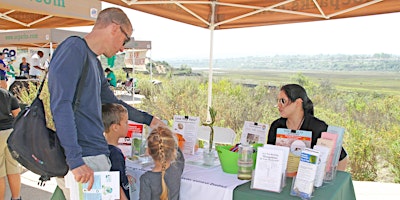 Almost every man-made element has an effect on our environment and uses up some of our earth’s resources. Although it is difficult to construct a large building totally out of renewable or sustainable resources, Architect Ron Yeo felt it was important to try to incorporate at least one or two environmentally sustainable elements in the new Upper Newport Bay Peter and Mary Muth Interpretive Center.
Almost every man-made element has an effect on our environment and uses up some of our earth’s resources. Although it is difficult to construct a large building totally out of renewable or sustainable resources, Architect Ron Yeo felt it was important to try to incorporate at least one or two environmentally sustainable elements in the new Upper Newport Bay Peter and Mary Muth Interpretive Center.
These are some of the key features of the 10,000 square foot building:
Concrete Structure
Concrete was the logical material for construction of this type of structure. Along with cement, concrete is made from primarily renewable materials, including sand, gravel and water obtained from up stream river beds along the Aliso and Trabuco Creeks.
Reinforcing Steel
The concrete is made stronger with 100% recycled steel reinforcing bars – rebar. The rebar was milled by Tamco, California’s best (and only) steel mill in Ranch Cucamonga. There are approximately 300 tons of recycled rebar in the building made up of:
2,400 pounds of confiscated firearms from 27 Southern California law enforcement agencies
362,400 pounds of used oil filters (Tamco typically recycles more than seven million oil filters each year)
228,000 pounds of steel-belted tire cords
7,200 pounds of steel drums and containers.
Doors and Windows
All of the wood for the doors and windows are laminated from scraps of leftover mahogany that would normally be thrown away. Carl Hoelscher of SW Sash & Door in Fountain Valley has been saving pieces of wood for the past two years for this project. Most of his materials are obtained from “managed forests.” The interior door panels are constructed with an annually renewable resource of wheat straw.
Ceramic Tile
Almost every building project has leftover tile. Leftovers along with factory seconds and discontinued stock were collected by Ron and his studio staff for the restrooms. The lavatory counter tops are made from recycled ground up glass manufactured by STC.
Carpet
The carpets are manufactured by “Envirelon” from 100% post-consumer plastic containers. It is estimated that Americans are discarding plastic containers at the rate of two to three million per hour. There is only a small amount of carpet in the offices and library, but they are made up of approximately 7,000 recycled bottles.









